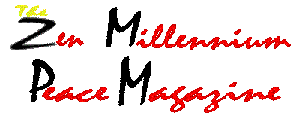

Peace Testimony
THE EAST AND PEACE
Pre-Aryan India seems to have been a pacifist country. The excavations at Mohenjo-Daro and Harappa have revealed no fortifications and very few weapons. At the same time there is evidence that the Yogic practices, which have played and still play so important a part in all Indian religions, had been developed as early as the forth millennium B.C.
The theology underlying such practices is a theology of immanence, which affirms that the soul of the individual is a portion of the divine soul of the world. Yogic practices are designed to make the individual become conscious of this identity between his inmost self and the spirit of the universe. This theology is summed up in the phrase: "Thou art that." Pacifism and humanitarianism are the necessary corollaries of this doctrine. The Hinduism of historical times is a religion combining elements of widely different value.
For those who want such things, it provides magic and orgiastic fertility rites; for the more spiritual it provides mysticism and a high philosophy. Its caste system is a kind of static militarism, in which the position of conquerors and conquered has been petrified into an unchanging social order. The doctrine that "thou art that", with its accompanying mystical practices and its humanitarian consequences, has persisted as a standing protest against this fossilised militarism.Humanitarian and pacifist principles were proclaimed and acted upon, often with excessive scrupulousness, by the followers of The Jains, a dissident sect of Hinduism which came into existence in the sixth and fifth centuries B.C. More important was the rise of Buddhism at about the same period.
Like the Jains, the Buddhists taught and practised ahimsa, or harmlessness,
refraining from doing hurt to any living being. Even Buddhist laymen were
expected to refuse to have anything to do with the manufacture and sale
of arms, with the making of poisons or strong drink, with soldiering or
the slaughter of animals.
Buddhism is the only great world religion which has made its way without
bloodshed or persecution, without censorship or inquisition. It is interesting
to compare Buddhist and Christian views on anger.
For Buddhism anger is always and unconditionally wrong and disgraceful.
For Christians, in whose bible the savage literature of the ancient Hebrews
is included on the same footing as the prophetic writing and the New Testament,
anger may be a divine attribute. What is called "righteous indignation"
has justified Christian churchmen in committing innumerable atrocities.

